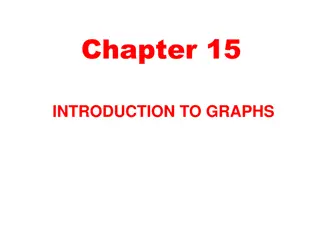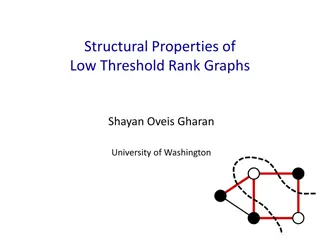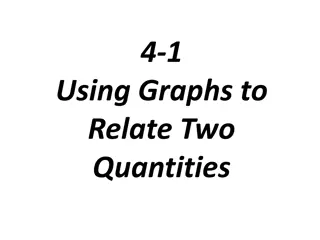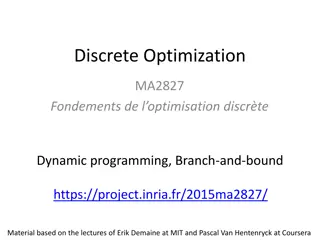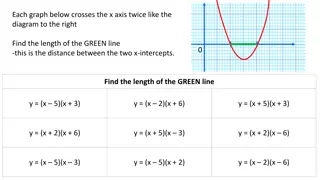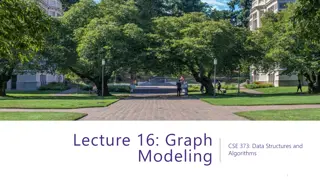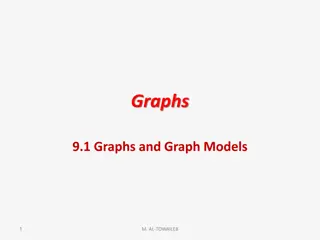Dynamic Programming for Finding Paths of Length k in Graphs
Today's plan involves exploring dynamic programming techniques for finding paths of length k in graphs. The focus will be on solving the rainbow-k-path problem and utilizing DP algorithms to achieve efficient solutions. By constructing tables and utilizing key observations, we aim to find simple paths that meet specific criteria within the graph structure. Through practical examples and theoretical insights, we'll delve into the intricacies of dynamic programming for graph traversal challenges.
Download Presentation

Please find below an Image/Link to download the presentation.
The content on the website is provided AS IS for your information and personal use only. It may not be sold, licensed, or shared on other websites without obtaining consent from the author.If you encounter any issues during the download, it is possible that the publisher has removed the file from their server.
You are allowed to download the files provided on this website for personal or commercial use, subject to the condition that they are used lawfully. All files are the property of their respective owners.
The content on the website is provided AS IS for your information and personal use only. It may not be sold, licensed, or shared on other websites without obtaining consent from the author.
E N D
Presentation Transcript
CMPT 405/705 Design & Analysis of Algorithms March 7, 2022
Plan for today Dynamic programming Finding a path of length k in time exp(k) Color coding
Finding a path of length k Input: A graph G=(V,E) with |V|=n, and a parameter k. Output: A simple path of length k C B A D G E F Example: A path of length 4 A trivial solution: try all sequences of length k, and check if it gives a solution Running time: ?(?? ????(?))
Finding a colorful path of length k Last time we saw a DP algorithm for HamPath. Toady we ll see something similar for the k-path problem. But first let s consider the rainbow-k-path problem. Input: A graph G=(V,E), and a color C(v) {1, k} for each vertex v V. Goal: Find a simple path of length k that sees all k colors. Theorem: There exists an (DP based) algorithm that solves the rainbow-k-path problem in time 2? ????(?), where n is the number of vertices the graph We will first solve the rainbow-k-path problem, and then use the solution to solve the k-path problem
Rainbow-k-path problem Input: A graph G=(V,E), and a color C(v) {1, k} for each vertex v V Goal: Find a simple path of length k that sees all k colors. Approach: Dynamic Programming. Idea: Try to construct a rainbow-k-path, by walking along a path v1, v2,v3 Suppose you visited t vertices so far: v1, v2, vt Key observation: You do not need to remember the vertices you have visited. You only need to remember The last vertex, and the set of colors you visited. Note: there are no more than n*2k choices for the colors
Rainbow-k-path problem Theorem: There is a DP based algorithm that solves the rainbow-k-path problem in time 2? ????(?), where n is the number of vertices the graph Approach: Dynamic Programming. We construct a table T[S,v] {0,1} The dimensions are 2[k] x n. The rows correspond to subsets S [k] of colors in the path The columns correspond to the last vertex in the path Define T[S,v] = 1 if and only if there is a path with colors exactly those the colors in S, and ends at v. G has a rainbow-k-path if and only if T[[k],u] = 1 for some vertex u V
Rainbow-k-path problem We construct a table T[S,v] {0,1} The rows correspond to subsets S [k] of the colors in the path The columns correspond to the last vertex in the path Define T[S,v] = 1 if and only if The colors in the path are exactly those in the set S, and the path ends at v. Algorithm: We fill in the entries in the table as follows 1. For sets of size 1 we set T[ S={c},v] = 1 if and only if C(v)=c 2. For each i=2 k 2.1 For all S V with |S|=i and v V do: Set T[S,v]=1 iff there is (u,v) E such that T[S-{C(v)}, u] = 1 3. G has a rainbow-k-path if and only if T[[k],u] = 1 for some vertex u V
Rainbow-k-path problem Algorithm: We fill in the entries in the table as follows 1. For sets of size 1 we set T[ S={c},v] = 1 if and only if C(v)=c 2. For each i=2 k 2.1 For all S [k] with |S|=i and v V do: Set T[S,v]=1 iff there is (u,v) E such that T[S-{C(v)}, u] = 1 3. G has a rainbow-k-path if and only if T[[k],u] = 1 for some vertex u V. Correctness: clear by definition of T. Running time: Size of T is O(n*2k), computing an entry is done in poly(n) time. Therefore, the total time is poly(n)*2k.
Rainbow-3-path problem A B C D B {BLUE} 1 1 A {GREEN} 1 {RED} 1 {BLUE, GREEN} 1 1 1 {RED, GREEN} 1 1 C D {RED, BLUE} {RED, BLUE, GREEN} 1 0 1 1
Rainbow-k-path problem Theorem: There is a DP based algorithm that solves the rainbow-k-path problem in time 2? ????(?), where n is the number of vertices the graph Algorithm: We fill in the entries in the table as follows 1. For sets of size 1 we set T[ S={c},v] = 1 if and only if C(v)=c 2. For each i=2 k 2.1 For all S [k] with |S|=i and v V do: Set T[S,v]=1 iff there is (u,v) E such that T[S-{C(v)}, u] = 1 3. G has a rainbow-k-path if and only if T[[k],u] = 1 for some vertex u V.
Finding a k-path in a graph But what if we are not given any colors, and we don t have any restrictions Input: A graph G=(V,E) with |V|=n, and a parameter k. Output: A simple path of length k Idea: Given a graph G, let s assign random colors to the vertices Consider a k-path in G Let s hope that the path gets all different colors Run the rainbow-k-path algorithm
Finding a k-path in a graph Algorithm: Given a graph G, assign random colors to the vertices Think of a k-path in G, and hope it gets all different colors (fingers crossed) Run the rainbow-k-path algorithm Repeat T times (or stop earlies if rainbow-k-path is found) Claim: Assign to each vertex a random uniformly color in {1 k}. ?! ??. Fix a path P=(v1,v2, vk) of length k in G. Then Pr P sees all k colors = ?. Therefore, ? ? By Stirling s approximation ?! > ? ? ? ??= ? ?. Pr P sees all k colors = Therefore, each iteration has probability > ? ? of sampling all colors.
Finding a k-path in a graph Algorithm: Given a graph G, assign random colors to the vertices Think of a k-path in G, and hope it gets all different colors (fingers crossed) Run the rainbow-k-path algorithm Repeat T times (or stop earlies if rainbow-k-path is found) Claim: Fix a path P=(v1,v2, vk) of length k in G. Then ?! ??. Pr P sees all k colors = Each iteration has probability > ? ? ? of sampling all colors. If we repeat T=10/p times, then Pr[all iterations fail]<(1-p)10/p<e-10<0.0001. Total running time: T*2k*poly(n) = ek*2k*poly(n) < poly(n)*6k.
Questions? Comments?






